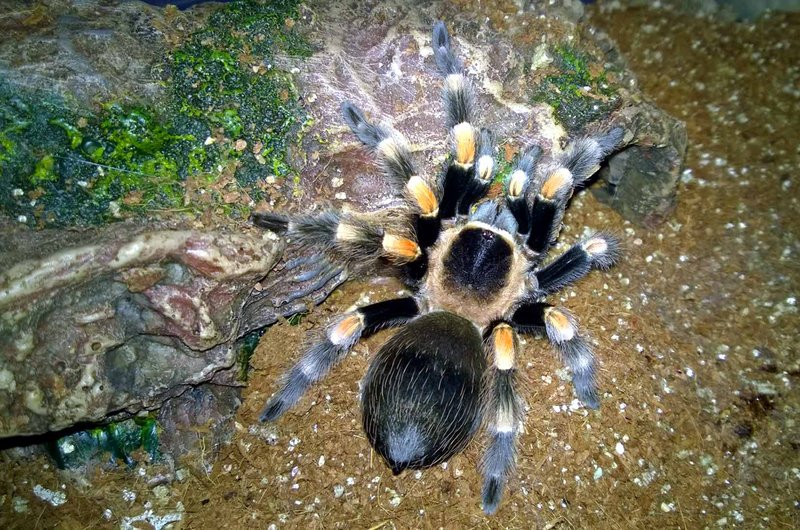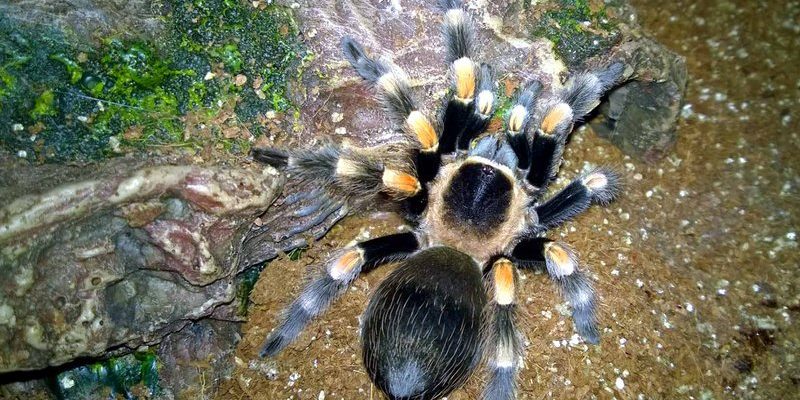
If you’re thinking about diving into the world of tarantula care, you’re in for an adventure. Just like any pet, they come with their own needs and challenges, but don’t worry; there are certain species that are particularly friendly for newcomers. In this article, we’ll explore the top 10 tarantulas that are best suited for beginners. Whether you’re looking for a docile pet or just want a cool conversational piece for your living room, I’ve got you covered.
1. Chilean Rose Tarantula
The Chilean Rose Tarantula is often the go-to choice for first-time tarantula owners. Why? This species is known for its calm demeanor and stunning beauty, sporting a lovely pinkish-brown color. They’re a bit like the golden retrievers of the tarantula world—friendly and easy-going.
These tarantulas are also quite hardy, making them forgiving of beginner mistakes. They don’t require complex habitat setups and can thrive in a range of temperatures. That said, they do appreciate a clean enclosure, so regular maintenance is key.
Keep in mind that these spiders can be a bit skittish when young but tend to calm down as they mature. If you handle them gently and allow them to acclimate, you’ll likely find your Chilean Rose to be quite the charmer.
2. Mexican Red-Knee Tarantula
Next up is the Mexican Red-Knee Tarantula, famous for its striking orange and black coloration. Picture a sunset—this tarantula’s appearance is just as captivating. It’s another excellent choice for beginners due to its docile nature.
They’re relatively easy to care for, needing a simple setup that includes a warm, dry environment. Just like your favorite houseplant, these spiders thrive with a little attention. Make sure to provide a hiding spot, as they enjoy having a place to retreat when they feel exposed.
One thing to keep in mind is their feeding habits. They do love their meals, so offering them crickets or mealworms will keep them happy and healthy. Just be careful not to overfeed, as it can lead to health issues.
3. Carolina Sooty Tarantula
The Carolina Sooty Tarantula might not be as visually striking as the previous two, but it has its own unique charm. This species has a dark, almost velvety appearance and is known for its friendly personality. Honestly, this tarantula is like that quiet friend who surprises you with their sense of humor.
These tarantulas are great for beginners, primarily because they are less prone to stress and are relatively easy to handle. They enjoy a moist environment, so keep their habitat a bit humid but not soaked. Regular misting will do the trick!
When it comes to feeding, they’re not picky eaters. Just make sure you provide food that’s appropriately sized. They each have their own preferences, so you might have to experiment a little to see what your Carolina Sooty enjoys the most.
4. Greenbottle Blue Tarantula
If you’re looking for stunning colors, the Greenbottle Blue Tarantula won’t disappoint. With vibrant blue legs and a striking orange abdomen, these spiders are true eye-catchers. Think of them as the “fashionistas” of the tarantula world!
While they’re a bit more active than other species, their temperament is still generally calm. These tarantulas are perfect for beginners who appreciate the visual appeal and are willing to spend time observing their behavior. They enjoy climbing, so incorporating structures in their habitat for them to explore is essential.
One thing to note: while they can be friendly, they also have a tendency to bolt if startled. This means you should handle them with care. Just like handling a new phone, it’s all about getting comfortable with it before diving right in.
5. Brazilian Black Tarantula
The Brazilian Black Tarantula boasts a sleek black appearance that can make it seem mysterious and elegant. Much like a classic black dress, it never goes out of style. These tarantulas are known for their calm and docile nature, making them perfect for beginners.
They’re not fussy about their habitat. A simple setup with proper ventilation and humidity will keep them happy. It’s like creating a cozy corner in your home; you don’t need to overthink it! Just ensure they have some hiding places for security.
Feeding is straightforward for these tarantulas. They’ll enjoy a diet of crickets and mealworms, but be sure to adjust their food according to their size. Keeping an eye on their eating habits will ensure they stay healthy and active.
6. Common Pink Toe Tarantula
If you love a bit of flair, the Common Pink Toe Tarantula might be right up your alley. With its stunning pink toes and graceful movements, it’s like having a ballerina in your living room. They’re known for being friendly and relatively easy to care for.
These tarantulas are arboreal, meaning they like to climb. So, when setting up their enclosure, think vertical! Providing branches and hiding spots will create a stimulating environment that encourages their natural behaviors.
You might be wondering about handling. These spiders can be a bit more jumpy than others, but with patience, they can be desensitized. Just take it slow—imagine you’re introducing a new friend to your group; a gentle approach works best.
7. Gooty Sapphire Ornamental Tarantula
The Gooty Sapphire Ornamental Tarantula is often considered one of the most beautiful tarantulas. Its vibrant blue hue is simply breathtaking—like holding a piece of the sky in your hand. However, while they look stunning, they can be a bit more challenging for beginners.
These tarantulas are fast and can be skittish. If you’re drawn to their beauty, that’s great! But be prepared for a pet that requires a little more caution and respect. They’ll thrive in a well-ventilated enclosure with plenty of climbing opportunities.
Feeding these guys involves typical tarantula fare, but keep an eye on their size—they can grow quickly! As you care for them, you’ll find their beauty is well worth the effort.
8. Brachypelma Vagans (Mexican Red- rump Tarantula)
The Brachypelma Vagans, or the Mexican Red-Rump Tarantula, is another excellent choice for beginners. This species is known for its docile temperament and beautiful coloration, featuring a dark body with striking red patches on its abdomen. Imagine having a tiny, friendly companion with a pop of color on its backside!
Caring for this tarantula is relatively easy. It doesn’t require an overly complicated setup. As long as you keep the enclosure clean and provide adequate hiding spots, you should be good to go. Regular maintenance is vital—it’s like keeping a tidy room, which everyone appreciates!
When it comes to feeding, be generous but mindful. Offer appropriate-sized prey, and watch as they hunt. Their feeding behavior can be fascinating, almost like watching a mini wildlife documentary right in your living room.
9. Curly Hair Tarantula
The Curly Hair Tarantula is known for its unique, curly fur, which gives it a fluffy appearance. Think of it as the teddy bear of tarantulas—many owners find them adorable! These tarantulas are well-liked by beginners due to their calm demeanor and hardiness.
These guys are also generally low-maintenance. They adapt well to various environments, making them perfect if you’re just starting out. A standard setup with substrate for burrowing and a cozy hide will suffice.
When it comes to feeding, they enjoy a typical tarantula diet, so crickets and mealworms will do. Just make sure you don’t overfeed, as it can lead to issues down the road. Keeping tabs on their eating habits will ensure they remain healthy and happy.
10. Antilles Pink Toe Tarantula
Last but not least, the Antilles Pink Toe Tarantula is known for its beautiful coloration and unique personality. With its striking display of pink and green hues, this tarantula is like having a work of art right at home.
These tarantulas tend to be a bit more social, often enjoying the company of their owners. They thrive in a spacious enclosure with plenty of vertical territory to climb. Think of it as creating a jungle gym for your new pet!
Feeding is similar to other species, and incorporating a varied diet will keep your Antilles Pink Toe healthy. Just remember, these tarantulas are quick and agile, so handling should always be approached with caution—like trying to catch a squirrel in your backyard!
In conclusion, choosing a tarantula as a pet can open the door to an exciting new hobby. Each species has its unique traits and care requirements, but the ten outlined above are excellent starting points for beginners. By selecting the right tarantula and taking the time to learn about their needs, you’ll find yourself on a rewarding journey filled with wonder and discovery. So go ahead, take the plunge, and enjoy the fascinating world of tarantulas!

